This Climber is Taking Rope Art to Another Level
This article originally appeared on Climbing
One depicts Smith Rock State Park. Another Rocky Mountain National Park. There's Yosemite's Half Dome and there’s Moon Lake Boulder at Mount Evans. Keep scrolling, there are a few family pets, too.
All of these works appear on the website and social media pages of East Mountain Designs, a fiber arts company founded by Mischa Ylva Ostberg, based out of Ellsworth, Maine. The brightly colored, deeply textured designs are composed of recycled climbing rope cut into strips and carefully glued onto fabric, canvas, or wood mediums. The rope easily mimics natural textures--it swirls and dips, weaves and undulates. Multi-colored fibers within each strip of rope create further depth, adding pops of light or mimicking shadows, blending to create something rich and energetic. It's easy to look at Ostberg's designs and be overcome with nostalgia for the places you've been, the views you've seen while out to climb.
Ostberg started East Mountain Designs in 2020 when they found themself unable to afford a meaningful gift for their husband, Eric. Being avid climbers, the two had over the years amassed years worth of retired ropes, and Ostberg decided to try making something out of the pile. Their first design depicted Arches National Park--the location of Eric and Ostberg’s first desert trip together. Friends saw the work, wanted designs for themselves, and gradually a business took shape.
Ostberg sources their canvas from reclaimed fabric stores; their frames from Goodwill or dumps; and their ropes from friends, local climbing gyms, guiding schools, and even REI, for whom Ostberg has recently been commissioned. The design they create for REI will be raffled or auctioned off to benefit the REI Cooperative Action Fund as well as local Native tribes. For Ostberg, donating their art to nonprofits or community-building organizations, such as the Ladies Climbing Coalition, and Flash Foxy, has become an important part of the gig. The art they do sell is intentionally priced lower to maintain its affordability.
"One of the biggest things that I decided I want to do with my art was try to find ways to make it more accessible to people who normally wouldn’t be able to have the luxury to buy art," Ostberg told Climbing over the phone. "I have a lot of love for the climbing community, but I think there’s not a lot of balance between queer individuals, differently abled individuals, people that are neurodivergent, women, people of color. ... I try to make my art affordable. A lot of times it's a sliding scale for people. I do barter and trade with Indigenous individuals, too."
One of Ostberg's favorite pieces, a blue whale laid across a material resembling fish net, was donated to the Wabanaki Public Health & Wellness in Bangor, an organization that serves four federally recognized tribes living on and off reservations across Maine.
Making each piece can take anywhere from two to 40 hours, depending on size. Ostberg begins by sketching a design on Procreate, a graphics editor app for digital painting. They transfer the design to canvas, using carpentry-grade hot glue to apply the stripes of rope. "I wear a fumigation mask," they said, since the fumes are noxious. They do all their work in an egg-shell blue shed on their property, which is kitted with an HVAC system.
But before beginning the work at all, Ostberg does their research.
"I kind of do a deep dive on the area, trying to figure out what its Indigenous roots are and then what the Indigenous people use that area for," they say. "There’s a lot of really famous climbing areas that Native people climbed in before settlers and colonizers arrived. Many were using the land for very important spiritual events. So I like to make myself knowledgeable of that." In identifying their works across social media and on their site, Ostberg includes Indigenous land acknowledgements. They hope that when people see their work, they will think of the land as it existed before modern buildings, construction, roads, and other access-granting amenities were constructed.
"I really hope that people, when they look at it, will see what the area could have been if it had never been settled," they say.
Commissions for Ostberg's work can be made at eastmoutaindesigns.com. Ostberg will also be attending a women's climbing event this coming March at EVO Rock + Fitness climbing gym, in Portland.
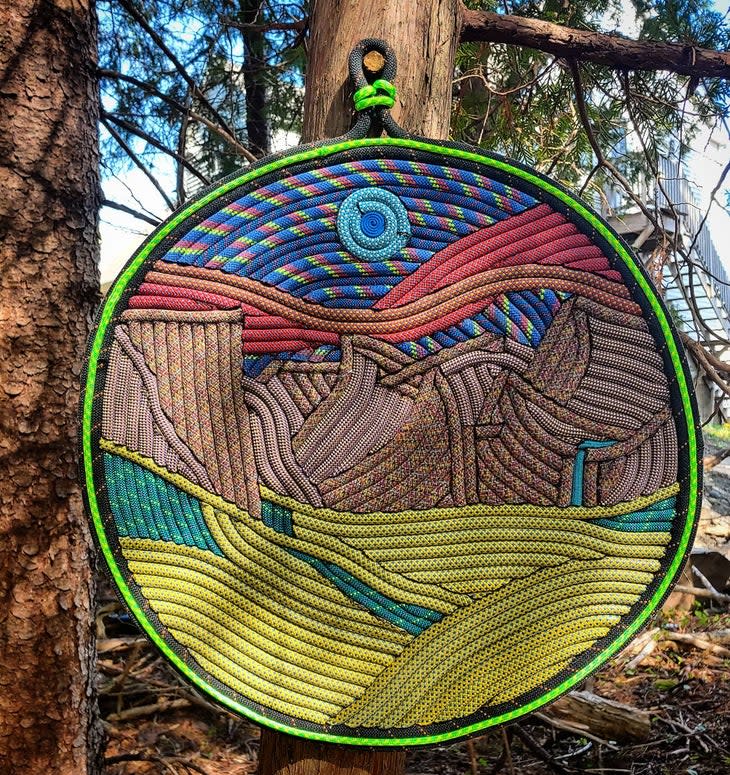
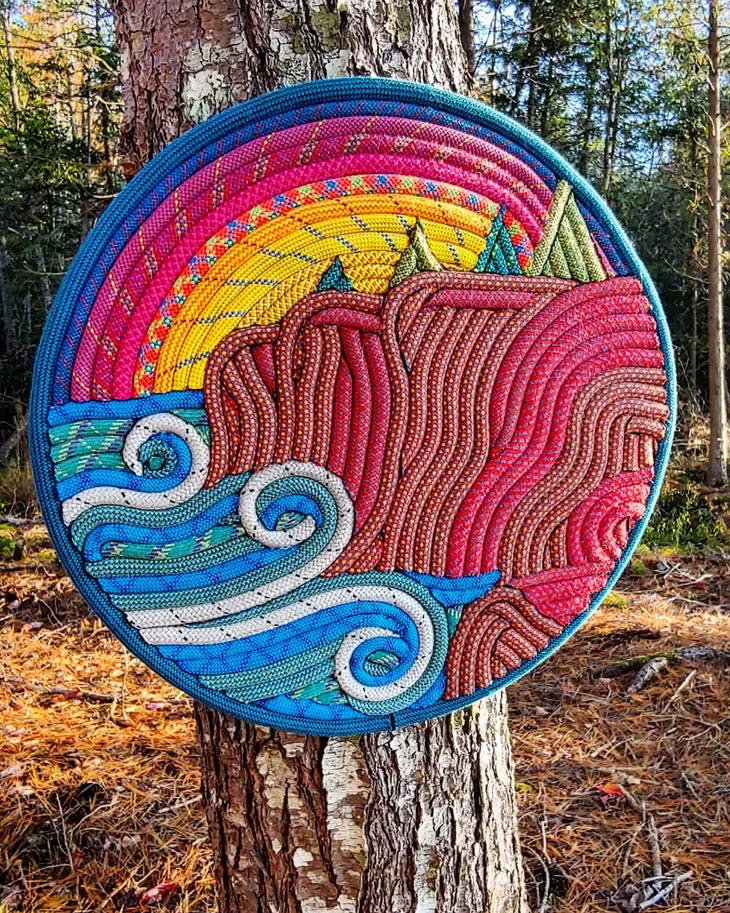
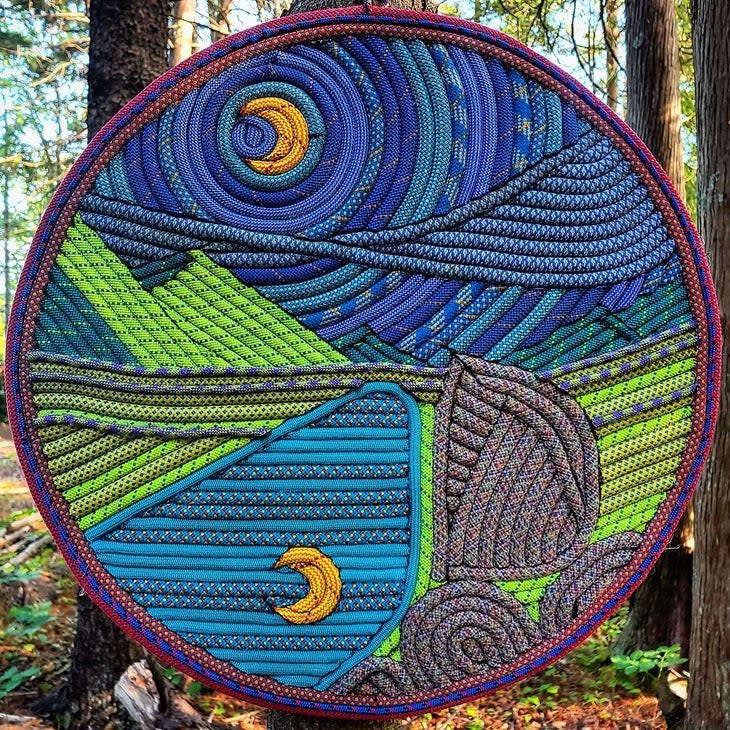
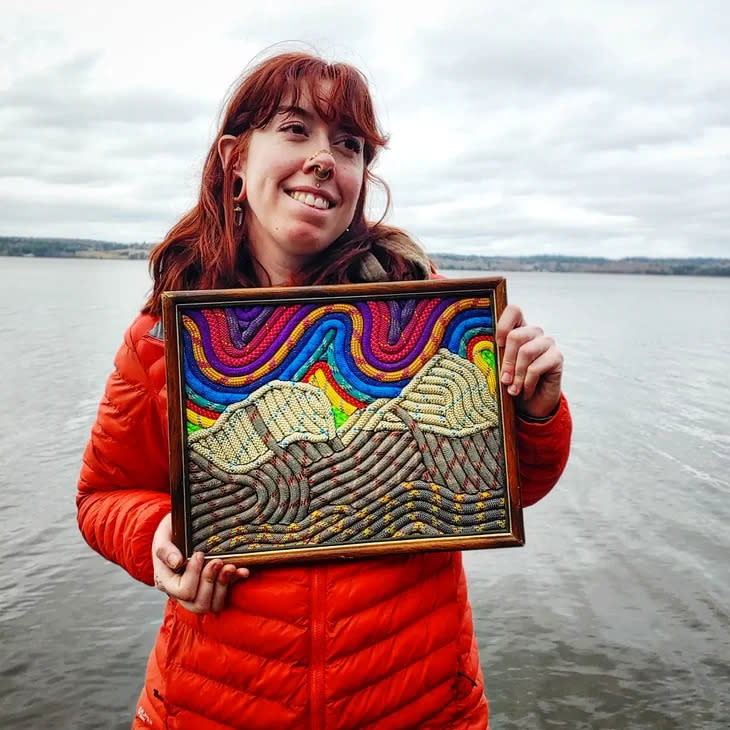
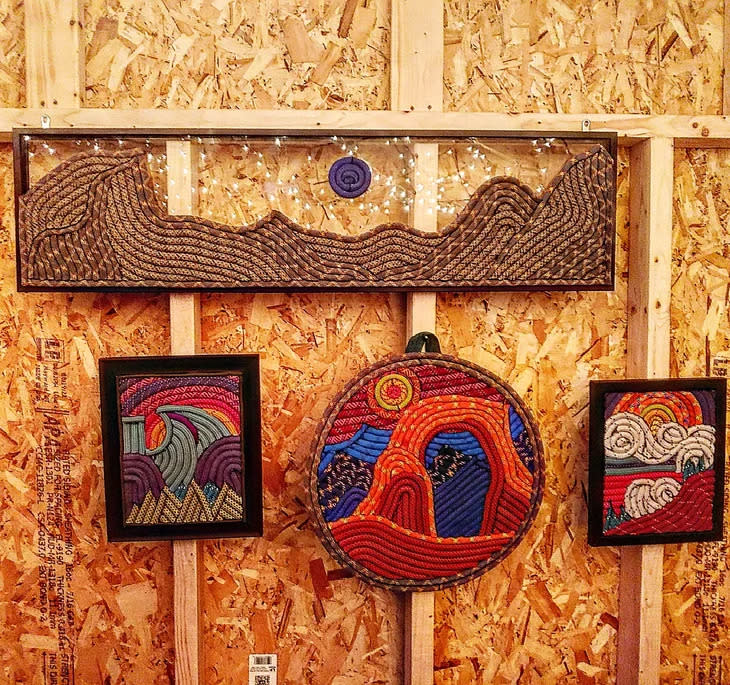
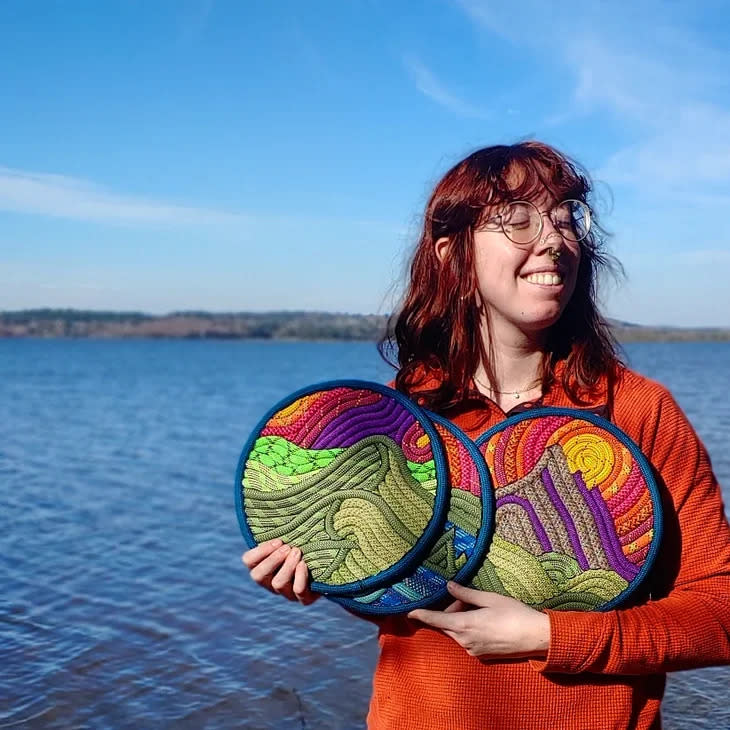
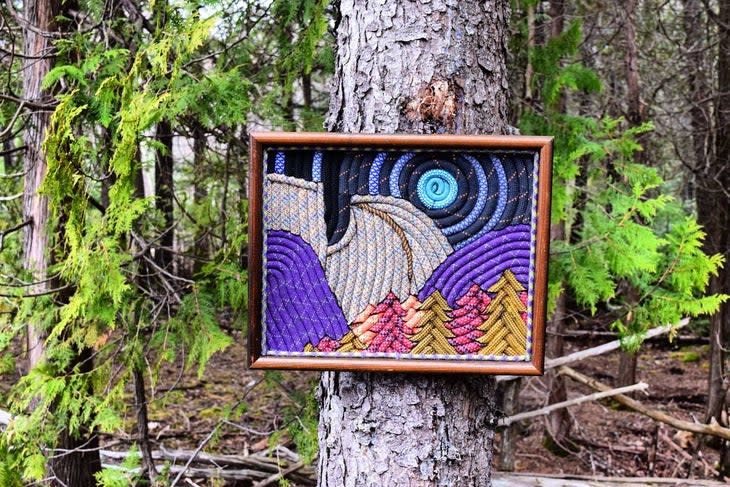

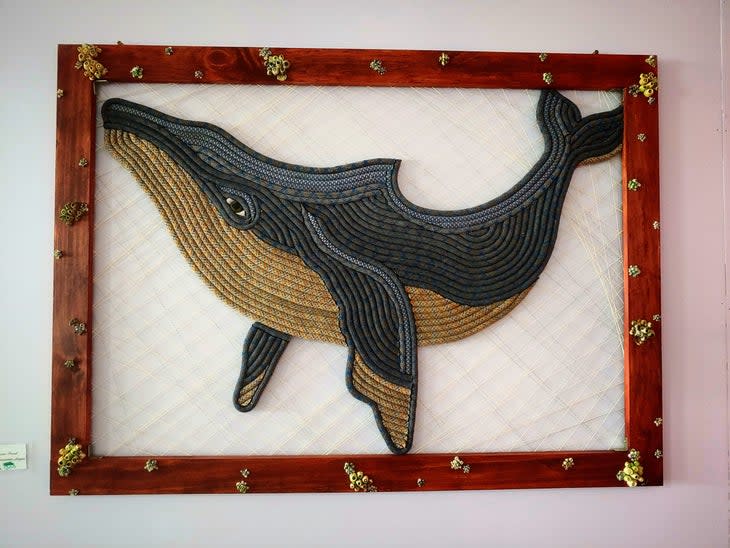
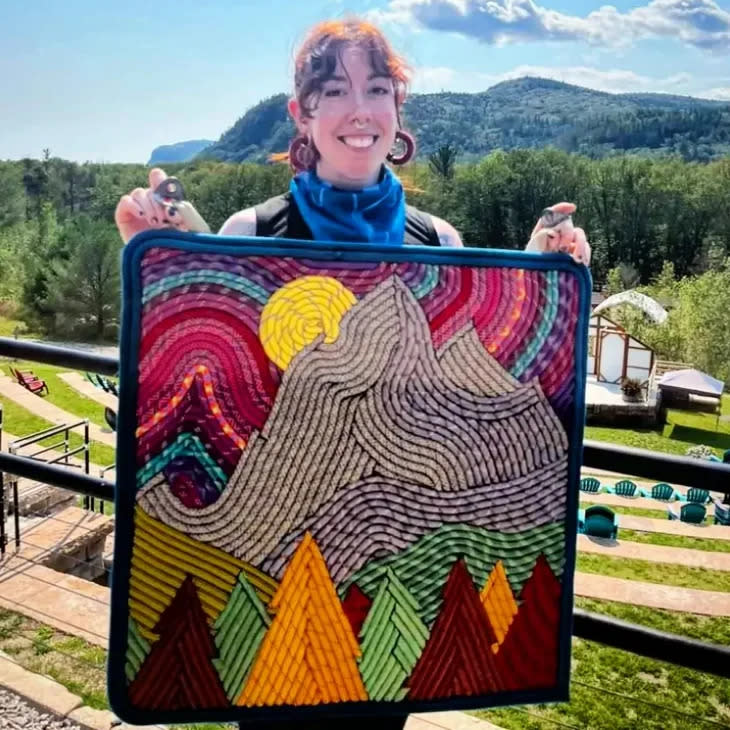
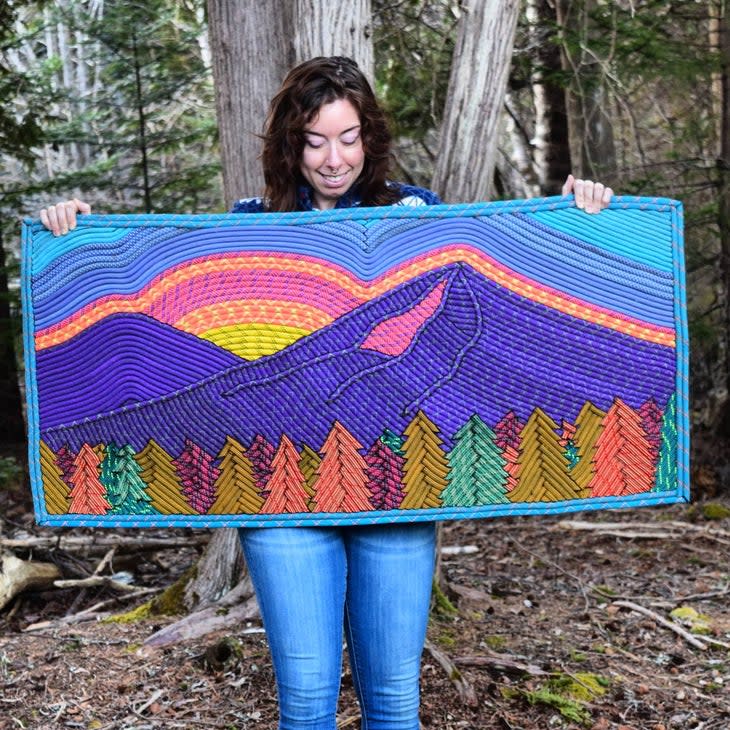
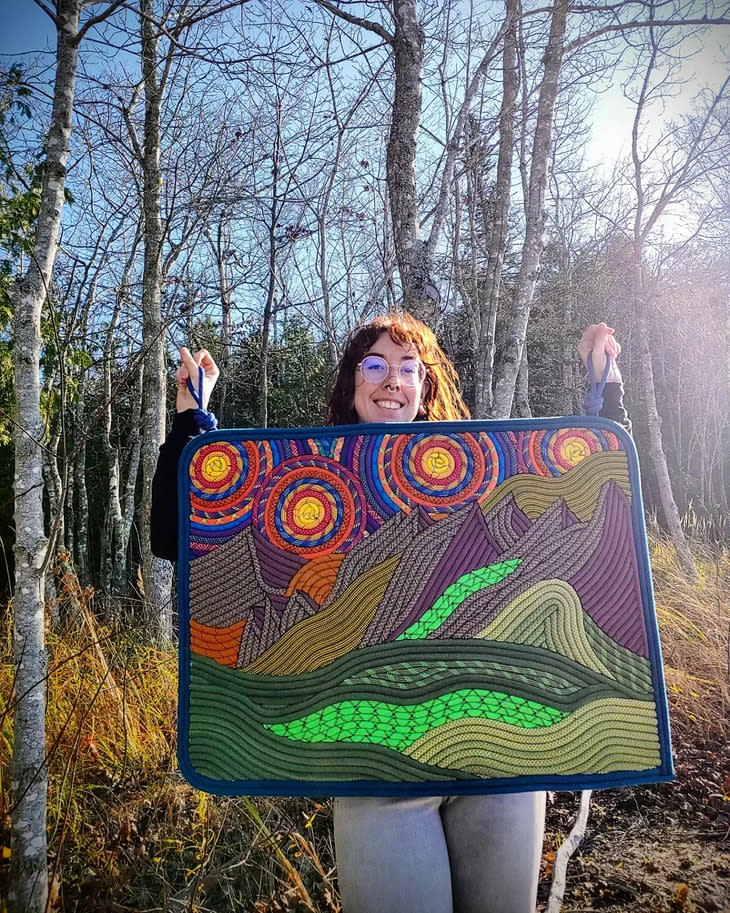
For exclusive access to all of our fitness, gear, adventure, and travel stories, plus discounts on trips, events, and gear, sign up for Outside+ today.

